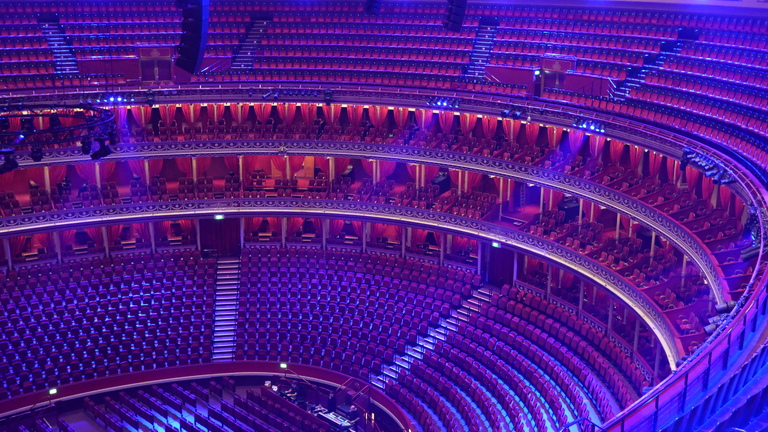
Jon Vivash, Lighting Operations Manager, Royal Albert Hall, confirmed the new fixtures have been installed in six groups of six in the Gallery, a further six groups of six in the Circle, and an additional four either side of the Organ for the Choirs. All are predominantly used for the lighting of audience seating areas.
“The Martin ELP PARs have opened up a huge range of looks in the house for both spoken word, when soft audience glows are required, to rock’n’roll ACL looks and strong saturated colours immersing the audience.” Jon explained.
The initial decision to upgrade the existing tungsten fixtures was partly influenced by the cost increase in Par lamps, and their ever-decreasing availability, plus an active drive by the Royal Albert Hall to reduce power consumption and carbon footprint by switching to LED.

In search of the most suitable replacement Par, the team at the Royal Albert Hall, including Jon Vivash and RAH Lighting Designer Richard Thomas, organised on-site comparison of five different fixtures. Rigged alongside a traditional Par fixture, Richard tested dimmer curves, output, beam angles, colours, and throw distances.
According to Jon, the Martin ELP PAR was chosen due to “weight, form factor, beam angle, colour mixing and intensity."
“The colour calibration between each unit is fantastic and no discernible differences between fixtures.” added Richard Thomas. “The colour match with our MAC Ultras and MAC Encores is great too and saves a lot of programming time.”
In use, the ELP PAR's have provided both an upgrade in saturated house colour, and of course a huge time saving during tech set-ups.

To customise the fixture to their exact needs, the team also designed and 3D printed top hats for all fixtures.
“Due to the short nose of the fixture, the lens can be very prominent.” explained Jon. “We trialled some ‘home made’ top hats to see the affect on the beam edge and settled around 1” being needed to avoid the beam edge but hide the lens. I then 3D printed a prototype and further tests showed 1.5” was needed. Another prototype later, we had exactly what we were looking for. 80 3D printed top hats were produced by a professional printing company and each unit had one fitted. You wouldn’t notice them unless one was missing. The lenses are neatly hidden and no beam cropping.”
Finally, Jon was also keen to praise Martin for a quick update to the ELP Par’s firmware. “During our testing we quickly added up the channel counts and were filling 4 universes. We requested a compact channel version, which Martin turned around for us in just a few days. In the current setup we run in pairs and fill 1 universe with 80 units.” he said.